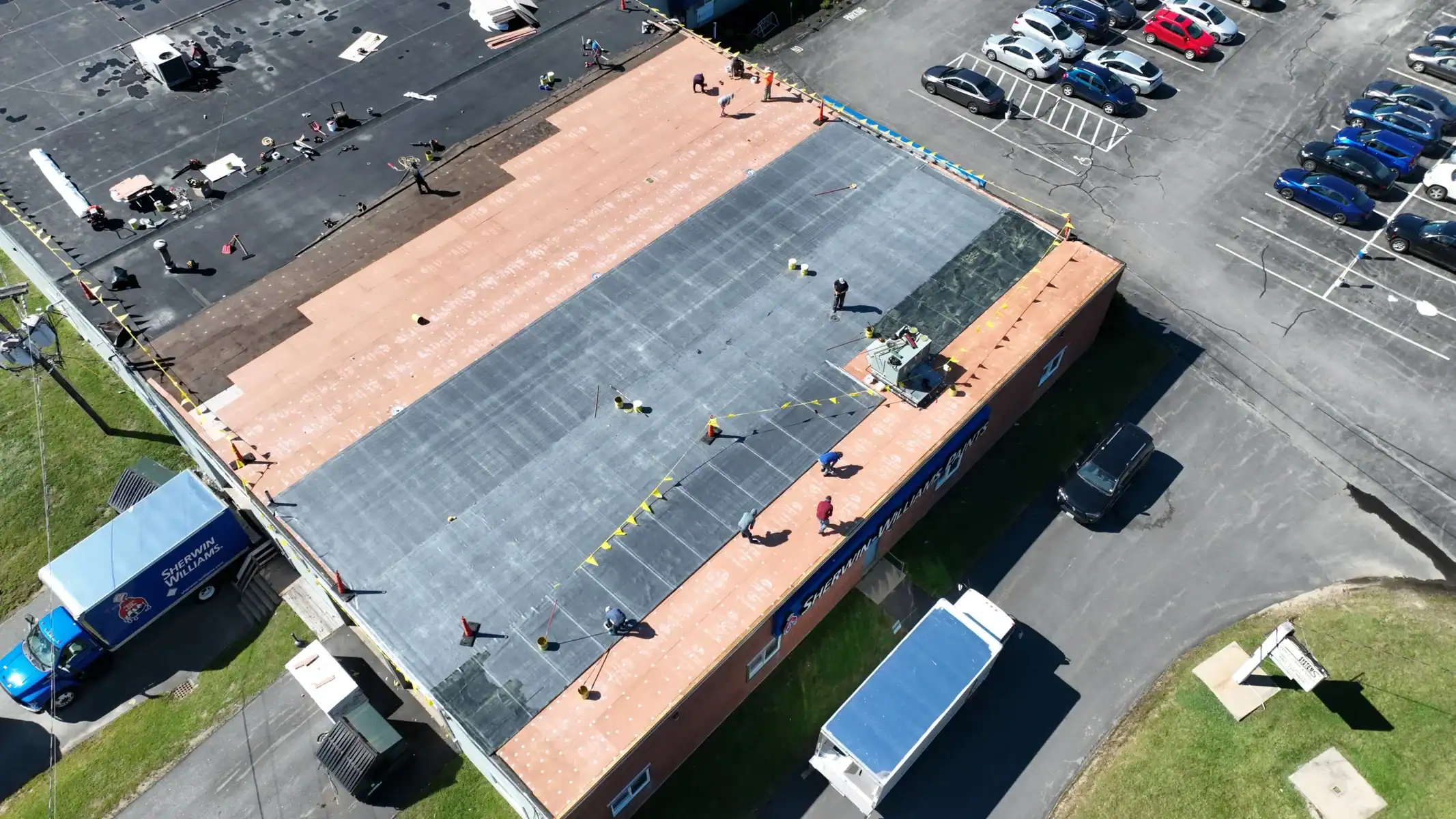
Rubber roofing is a resilient, sustainable, and cost-effective roofing solution that has become increasingly popular among homeowners seeking to protect their homes and enhance their roof’s longevity. As the leading residential roofing contractor in New Hampshire and Southern Maine, we are committed to providing our clients with the most innovative and effective roofing solutions on the market. In this comprehensive guide, we will delve into the numerous advantages of rubber roofing, explore the available material options and installation techniques, and share expert tips on proper maintenance and care for a long-lasting and reliable home roof.
Made from recycled rubber materials and designed to be environmentally friendly, rubber roofing offers impressive durability and weather resistance. This low-maintenance material is versatile and adaptable to a variety of residential roofing needs, providing unmatched value in terms of cost and performance. Additionally, rubber roofing can significantly reduce energy consumption and improve your home’s energy efficiency, making it a wise investment for homeowners seeking a high-performing, eco-friendly roof.
Key Features and Benefits of Rubber Roofing
Rubber roofing offers several outstanding advantages that make it a desirable choice for homeowners:
- Durability: Made from robust and flexible rubber materials, rubber roofing is highly resistant to weather damage, providing excellent protection against water, wind, and other environmental elements.
- Low Maintenance: Rubber roofing requires minimal upkeep, making it a hassle-free option for busy homeowners. Its durable nature means it is less likely to crack, warp, or develop leaks.
- Energy Efficiency: The insulating properties of rubber roofing can significantly reduce heat transfer and improve your home’s overall energy efficiency, potentially lowering your energy bills.
- Eco-Friendly: Made from recycled materials, rubber roofing is an environmentally-friendly roofing solution that promotes sustainability and reduces waste in landfills.
Material Options for Rubber Roofing
There are several types of rubber roofing materials available, each with its unique characteristics:
- Ethylene Propylene Diene Monomer (EPDM): This synthetic rubber material is UV resistant, watertight, and highly durable, making it a popular choice for flat or low-slope roofs.
- Thermoplastic Olefin (TPO): A blend of rubber and plastic materials, TPO offers exceptional heat and UV resistance and is often used in energy-efficient roofing systems.
- Polyvinyl Chloride (PVC): Known for its strong waterproof capabilities, PVC is a widely used rubber roofing material that can withstand harsh weather and chemical exposure.
- Modified Bitumen: Combining rubber and asphalt materials, modified bitumen provides excellent flexibility and durability, making it well-suited for cold climates or areas with temperature fluctuations.
Proper Installation Techniques
To ensure the longevity and performance of your rubber roof, proper installation is essential:
- Surface Preparation: A clean, dry, and structurally sound roof surface is critical for successful rubber roofing installation. All debris, old roofing materials, and damaged areas should be addressed before installation begins.
- Underlayment Selection: A high-quality underlayment serves as a barrier against moisture intrusion and provides an additional layer of insulation. Be sure to select an underlayment compatible with your specific rubber roofing material.
- Roof Flashing: Properly installed roof flashing is crucial in preventing water leaks around vents, chimneys, and edges. Consult with a professional roofing contractor to ensure your flashing is installed correctly.
- Seaming and Adhesives: The seams where rubber roofing sheets overlap should be sealed and bonded using specially formulated adhesives, ensuring a watertight barrier.
Maintenance Tips for Rubber Roofing
To maintain the condition and performance of your rubber roof, follow these best practices:
- Regular Inspections: Conduct annual or biannual roof inspections to identify potential issues, such as cracks, punctures, or loose seams, before they become more significant problems.
- Clean Debris: Remove accumulated debris, such as leaves and branches, from your roof’s surface to prevent water buildup and potential damage.
- Monitor Flashing and Seams: Check the condition of your roof’s flashing and seams to ensure a watertight barrier.
- Address Repairs Promptly: Promptly address any identified roof damage or deterioration to preserve the integrity of your rubber roofing system.
Conclusion
Rubber roofing is an environmentally-friendly, durable, and energy-efficient solution for homeowners seeking long-lasting roof protection. By understanding the features and benefits of rubber roofing, exploring available material options, and adhering to proper installation and maintenance practices, you can enjoy the advantages of a reliable rubber roof for years to come.
As the top residential roofing contractor in New Hampshire and Southern Maine, our team is devoted to helping homeowners find the perfect rubber roofing solution for their homes. Contact J. Carnes & Son Roofing today for professional advice and installation services to create a sturdy, eco-friendly, and long-lasting roofing system with rubber roofing materials.
